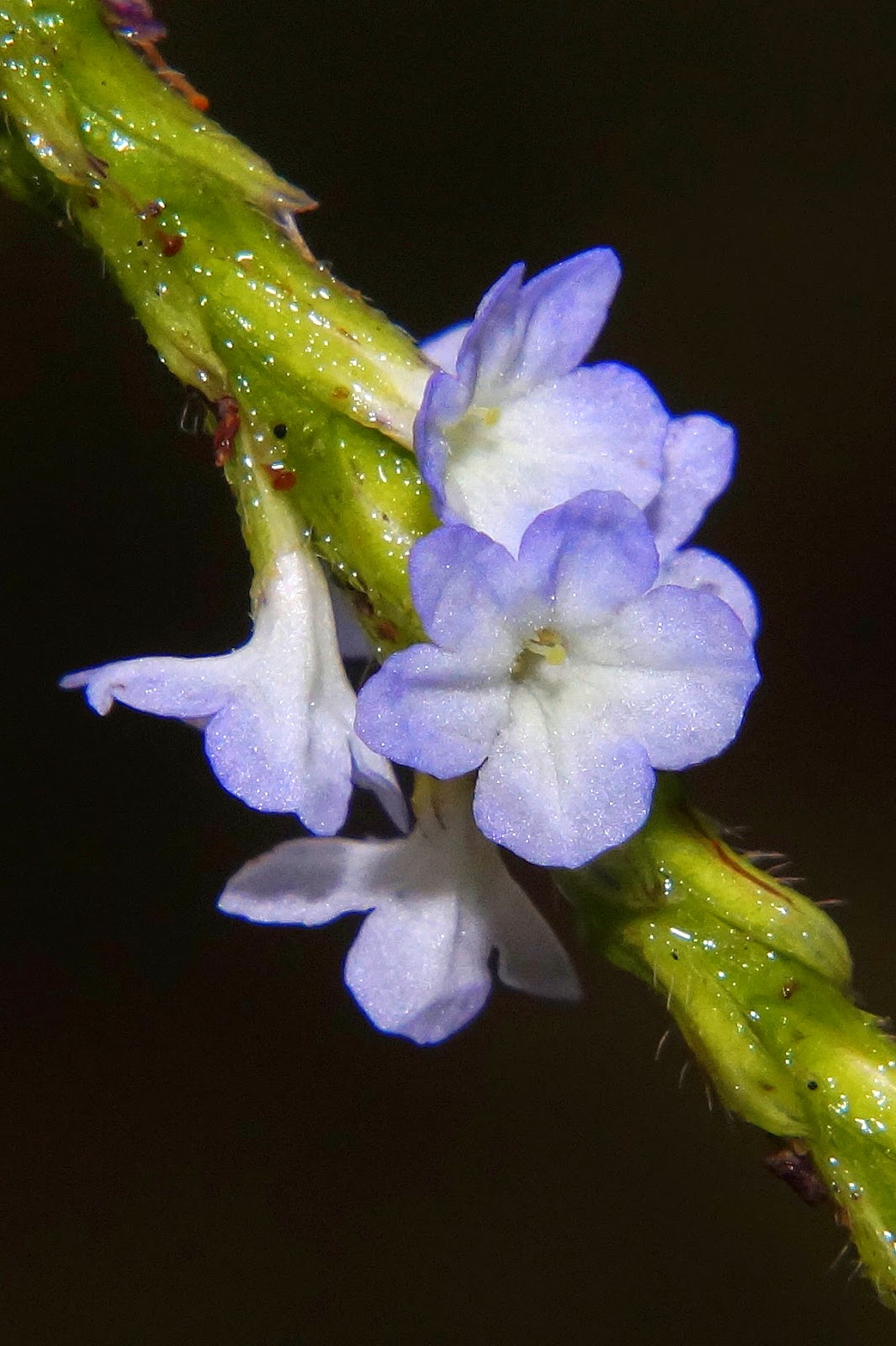Snakeweed
The Snakeweed (Stachytarpheta spp.), also called Porterweed, is an introduced species originated from South America. A shrub reaching up to 2 m, it exhibits many typical features of the family Verbenaceae in which in belongs. The leaves, for example, are oppositely arranged, and the flowers are tubular, each with five 5 petals.
 |
| Snakeweed flowers may be blue, light blue or white. |
Snakeweed’s flowers are borne on elongated spikes, and the flowers come in different colors ranging from white, light blue to deep blue. This characteristic may help identification for several species looks very similar to the novice in many aspects except for the flowers. A case in point is Stachytarpheta Cayennensis and S. jamaicensis which may produce white and blue flowers respectively.
 |
| Snakeweed leaves are oppositely arranged. |
Throughout its distribution in Southeast Asia, snakeweed is known by different names including Limbagat (Philippines), Gewongan (Indonesia), Selasih Dandi (Malaysia) and Kariyarthani (India).
 |
| A butterfly feeding on nectar-rich snakeweed flower. |
In some locations, snakeweeds can be a nuisance especially in cleared areas because they suppress the growth of native plants. Even so, some local people regard them as a medicinal plant to treat a variety of diseases. The root, for instance, is used in treatment of gonorrhea, and the leave is a natural remedy for swelling and diarrhea.